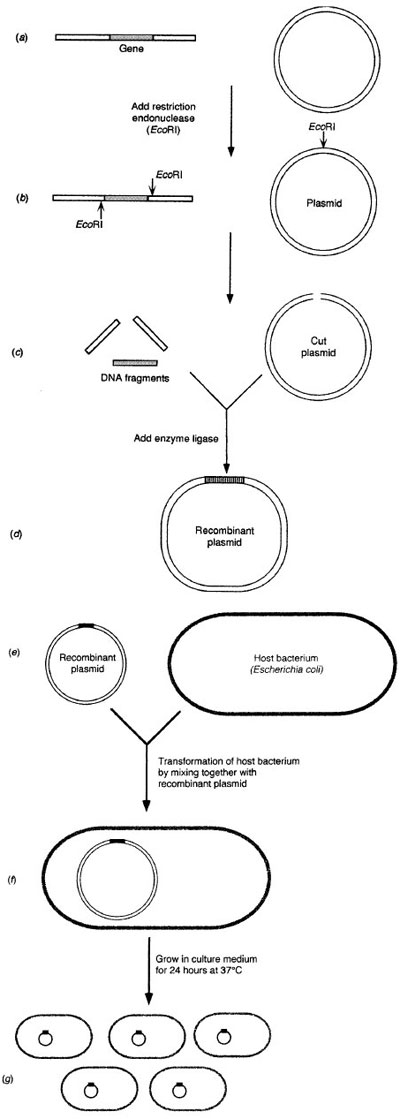Cloning
Discoveries in molecular biology have allowed scientists to duplicate natural genetic transfer phenomena in the laboratory and to develop methods to introduce almost any type of genetic information into an organism. Genetic engineering is the creation of new DNA , usually by linking DNA from different organisms together by artificial means using enzymes known as restriction enzymes. Cloning is the production of many copies of the newly engineered DNA . The amplification of a specific cloned gene or genes, coupled with a marked increase in production of their protein products, makes it relatively easy to extract and purify these proteins in the laboratory.A typical cloning procedure is illustrated in Figure 8-1. A suitable plasmid (vector) is selected in which to insert a desired gene (donor DNA ). Both donor DNA and vector are digested with the same restriction enzyme, and then incubated together with ligase to join the donor DNA fragments with the plasmid. The result is a recombinant plasmid that contains the desired DNA fragment. The recombinant plasmid is then used to transform a host bacterial cell, creating a new genetic strain of bacteria that stably maintains the recombinant plasmid. The goal of cloning is to isolate a desired gene or segment of DNA from an organism and introduce it into a suitable host cell to obtain large quantities of the DNA . Often, this donor DNA is used for the large-scale production of important proteins, but the DNA may also be used in the detection of infectious agents or abnormal cells. Normally, the donor DNA is a small portion of the genome of a cell, and it is present as one or two copies in each cell. Therefore, before donor DNA can be extracted, a sufficient number of cells containing the desired DNA must be obtained, either from a small segment of tissue or by culturing the cells. The cells must then be disrupted and the genetic material (either in chromosomes or in plasmids) extracted

Figure 8-1 A typical cloning procedure




